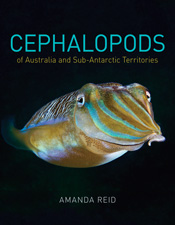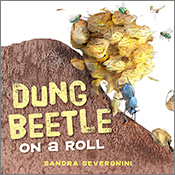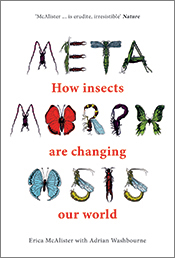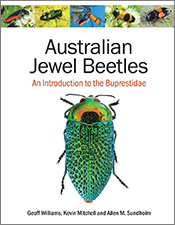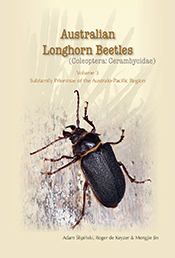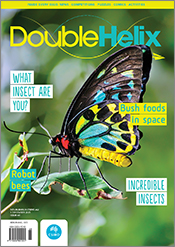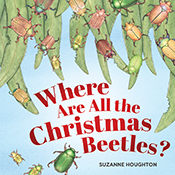Cephalopods of Australia and Sub-Antarctic Territories
By: Amanda Reid
Illustrated guide to 226 species of cephalopods, including biological and fisheries information.
Australian waters contain the highest diversity of cephalopods (squid, cuttlefish and octopus) found anywhere in the world. They are highly significant ecologically, both as top-level predators and as prey for numerous vertebrates, including fishes, seals, cetaceans and seabirds. + Full description
Cephalopods of Australia and Sub-Antarctic Territories is a comprehensive guide covering 226 species, which represent over a quarter of the world’s cephalopod fauna. With an emphasis on identification, this book includes keys, species descriptions, full-colour illustrations and distribution maps, as well as a summary of the biology and behaviour of cephalopods and fisheries information. This is an invaluable tool for researchers and fisheries experts as well as amateur naturalists, fishers and divers.
- Short descriptionNews
This title is no longer available in print, but can still be purchased as an eBook.
Reviews
"Reid's new book is a "must have" resource for anyone researching cephalopod biology or ecology but also of us to those wanting to identify cephalopods whether that be in taxonomic, biological or ecological research... The book will be especially valuable to systematists as the complete reference as the original species description, type repositories and type localities are provided for each species."
Bronwyn M. Gillanders, Australian Marine Science Bulletin, February 2017, pp. 45-46
"Functioning almost as a large, especially detailed field guide, Cephalopods of Australia and Sub-Antarctic Territories features 226 species of cephalopod and describes their habitat, biology, and distribution, amongst other aspects. With colour photographs, black and white drawings, and distribution maps, Reid's work aptly explores why this class of animal is so important ecologically... The nature of the guide is that it truly establishes the immense variety within the Cephalopoda class. It would have been no easy feat for Reid to encompass so much information into the one volume."
Rachel Fetherston, Wild Melbourne (blog), 13/03/17
"Using this volume, even someone with no prior experience with cephalopods should be able to identify any cephalopod in these waters, and gain skills needed to understand the broader literature on their taxonomy."
Christine L. Huffard, Quarterly Review of Biology 93, March 2018
Details
ePDF | July 2016ISBN: 9781486303946
Publisher: CSIRO Publishing
Available from eRetailers
ePUB | July 2016
ISBN: 9781486303953
Publisher: CSIRO Publishing
Available from eRetailers
Features
- Enables all named cephalopod species to be reliably identified
- Using a number of identification tools, enables recognition of commercially exploited species by a variety of end-users - essential for fisheries and conservation management
- Includes an extensive literature review that will provide an invaluable starting-point for anyone working on this group of fascinating invertebrates
- Contains outstanding illustrations, including colour illustrations of live animals
- Provides keys and distribution maps
- Identifies the current ‘gaps’ in our knowledge as a basis for future research effort
- Includes up-to-date biology and fisheries information
Contents
AcknowledgementsIntroduction
Glossary
General biology
Class Cephalopoda
Order Nautilida
Order Bathyteuthida
Order Idiosepiida
Order Myopsida
Order Oegopsida
Order Sepiida
Order Sepiolida
Order Spirulida
Order Octopoda
Order Vampyromorphida
Appendix A. Institutional acronyms
Appendix B. Fixation and preservation methods
Appendix C. Australian cephalopod checklist
References
Index
View the full table of contents.

